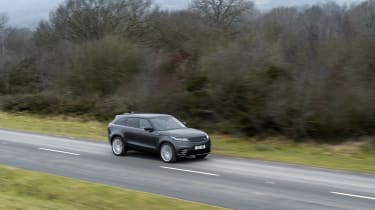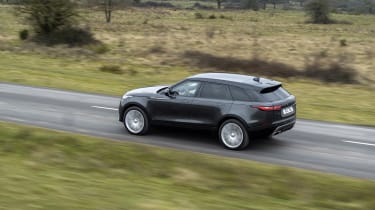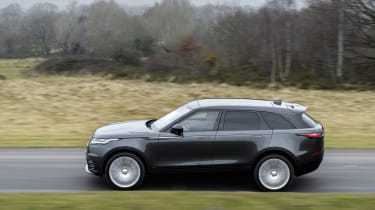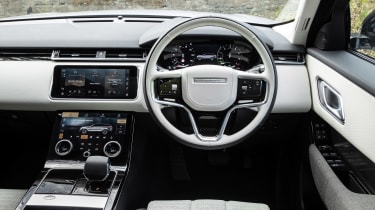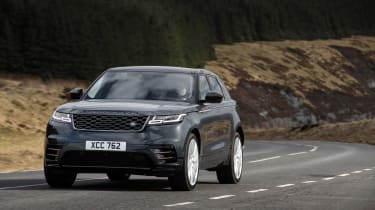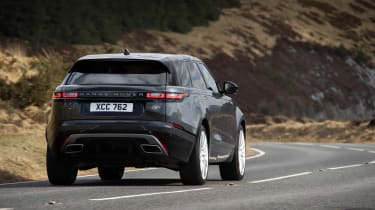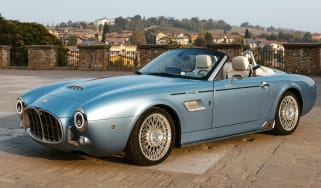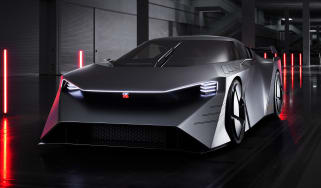Range Rover Velar 2021 review – elegant SUV now has the powertrains it deserves
Sleek and stylish luxury 4x4 continues to impress, but it’s still not the sharpest drive in the class
The Range Rover Velar is Land Rover’s midsized luxury SUV, one designed with a greater focus on style and on-road ability than its more rugged siblings. First released in 2017, the Velar inherited this on-road focus with the application of a Jaguar-sourced aluminium chassis shared with the F-Pace, but like the Jag it came undone against its rivals due to its mediocre engine range and old-school interior tech.
It’s these two elements that Land Rover has sought to address with the Velar’s mid-cycle update – there’s a new range of hybridised petrol and diesel powertrains, and the application of the latest infotainment updates as seen across the wider JLR portfolio.
Engine, performance and 0-60mph time
All of the Velar’s new powertrain options are hybridised in some form, with the diesel range made up of a 2-litre four-cylinder with 200bhp and the new 3-litre straight-six with 297bhp. Both diesels include mild-hybrid tech, comprising a 48V electrical system and an integrated starter motor generator.
There’s also a new 394bhp straight-six petrol engine available with the same mild-hybrid assistance, plus a carry-over 247bhp four-cylinder petrol which does without. Finally, Land Rover has also fitted the 394bhp plug-in hybrid powertrain from its larger Range Rover models into the Velar, which pairs the same 2-litre turbocharged four-cylinder petrol engine with an electric motor and 12.4kWh battery pack.
More reviews
In-depth reviews
Reviews
Against the stopwatch, the D300 diesel will crack 62mph in 6.5sec, with the P400 petrol six wiping a second off that time, and the P400e plug-in hybrid being the quickest of all at 5.4sec.
Technical highlights
As mentioned above, the Velar’s Jaguar-derived underpinnings yield impressive results when it comes to the way it drives. As well as the structure being lower and more streamlined than it would be on a Land Rover platform, the Velar also shares the F-Pace’s double-wishbone front and integral-link rear suspension designs.

This isn’t to say that the Velar’s off-road ability is non-existent, as it will still traverse more difficult terrain than any owner could possibly find themselves tackling thanks in large part to the standard-fit terrain response system.
All four-cylinder Velars run on steel springs and passive dampers, but all six-cylinders and the plug-in have an air spring set-up with adaptive dampers worked in.
Despite opening the gates to Land Rover’s new minimalist touchscreen-heavy interface, the actual infotainment system is slow to react and difficult to use on the move. While the lower display is similar to before, the main interface has moved across to the impressive new Pivi Pro system, complete with an upgraded screen with much improved response and resolution.
What’s it like to drive?
If you’re already open to the idea of SUVs then the Velar is among the more appealing of its breed. The exterior styling is striking, particularly in profile, and the interior is a wonderfully calming and stylish environment, even four years after its launch.
The difference with this new model is that that serenity is now matched with a deeply impressive set of powertrains that buff away the old car’s rough edges, making the Velar as slick to drive as it looks. The new D300 diesel in particular is extremely impressive – responsive, powerful, effortless and superbly refined.
What’s equally impressive though is the synergy between the engine and the other parts of the powertrain. The eight-speed ZF automatic transmission shifts smoothly and imperceptibly, yet seems perfectly tuned in to the engine’s power delivery.
There’s a similar level of sophistication to the plug-in hybrid powertrain too, as with a full battery the Velar P400e is happy to run exclusively on its electric motor, with a very clear gauge built into the instrument cluster showing the point at which the petrol engine will be fired. And even when it does, so refined is it that it’s only noticeable from the active rev gauge. It’s a very impressive calibration, even if the ultimate EV range is somewhat limited at 20-odd miles in the real world.
In corners the air suspension offers good body control, while isolating bumps from the cabin. Like many air systems, sharper intrusions can be felt as a thud, but the stiff structure means you won’t be wincing every time you encounter a pothole. The optional 22-inch wheels can spoil things a little, with not quite enough sidewall to absorb the shock of certain bumps – the slightly smaller 21-inch wheels are better in this regard.
In reality the Velar is still very much a long-legged cruiser, and certainly does better when driven with a gentler hand. Up the pace and rivals such as Porsche’s Macan and BMW’s X3 do feel more composed, capable and happy to make decent progress on a challenging road, but keep things relaxed and the Velar makes for an excellent everyday companion.
However, there might be an issue with regard to interior roominess, as despite its big footprint, space inside is lacking – this might seem a particularly un-evo sentiment, but buyers would probably want to know this.
Price and rivals
The base Velar D200 S starts at £46,115, which is a £3000 premium compared to the equivalent BMW X3, Audi Q5 and Mercedes GLC. Jump up to the six-cylinder or plug-in models and this price will jump to north of £55,000.
Prices then rise sharply when the R-Dynamic styling package, and higher-specification SE and HSE trim levels are taken into consideration.
That pricing puts the Velar right where you’d expect it to be in the Range Rover line-up, with the smaller Evoque spanning £30,760-£53,085 and the Range Rover Sport priced between £60,015 and £97,780.

